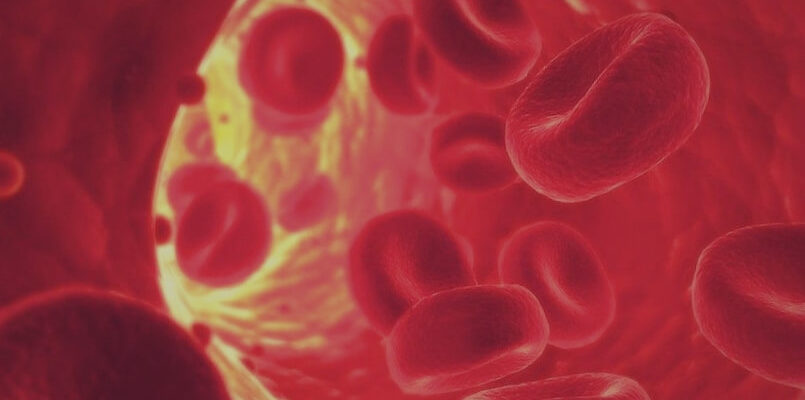All About Blood: 78+ Fascinating Facts About Human Blood. All the most interesting facts about human blood – in one article!

One of the most important functions of the blood is to carry oxygen throughout the body. But is this the most interesting thing to say about blood? Of course not!
Let’s explore 78+ exciting facts about human blood. We are sure you will be surprised!
Interesting facts about human blood
1. Almost 7% of a person’s weight is blood.
2. Blood also consists of a yellow liquid known as plasma.
3. Blood plasma is 90% water.
4. Plasma also consists of hormones, glucose, proteins, gases, electrolytes, and nutrients.

5. Platelets, leukocytes, and erythrocytes are in the blood plasma.
6. Plasma can be separated from the rest of the blood using a centrifuge that spins the blood at a very high speed.
7. Only red blood cells carry oxygen.
8. Red blood cells are composed of hemoglobin. Hemoglobin is a protein that contains iron. Oxygen combines with this iron to give the blood its characteristic red color.
9. Unlike erythrocytes, leukocytes in the blood are responsible for the protective function. Leukocytes are “responsible” for the fight against viruses, bacteria, they fight with all unwanted material that enters the human body.
10. Platelets are responsible for blood clotting during bleeding, external or internal.
11. Blood clotting can be dangerous. If a blood clot develops in the vessels of the heart, it can cause a heart attack.
12. Blood carries not only oxygen throughout the body but also other nutrients.
13. Blood pressure is the pressure of blood against the walls of blood vessels.
14. High blood pressure (blood pressure) increases the risk of stroke and heart attack.
15. Average blood pressure varies from person to person, although the standard value is 112/64 mm Hg.
16. There are about 30 different blood types.
17. The length of the blood vessels in the body of an adult is 100,000 kilometers.
18. The average blood volume for men is 5.6 liters, for women – 4.5 liters.
19. The body of a newborn baby contains approximately 1 glass of blood.
20. Blood plasma, which we mentioned earlier, makes up about 55% of the total blood volume present in the body.
21. Blood contains a special type of white blood cell known as granulocytes. These cells “roll” along the walls of blood vessels and prey on bacteria. If they find any foreign bodies, they absorb them.
22. The lifespan of erythrocytes is not more than 120 days.
23. Platelets, plasma, and red blood cells are constantly produced by the bone marrow.
24. Donor erythrocytes cannot be stored for more than 42 days.
25. Donated platelets must not be stored for more than 5 days.
26. Donated plasma can be stored frozen for 1 year.
27. Platelets, erythrocytes, and blood plasma can be donated separately. This is called apheresis.
28. People can have an artificial heart, but nothing can replace blood for a person. There is no such thing as artificial blood.
29. Our body contains about 0.2 mg of gold. Most of it is in the blood.
30. Pus is dead blood cells that have protected the body from infection.
31. The only place in the body where there is no blood is the cornea of the eye because the cornea is able to directly extract oxygen from the air.
32. The supply of blood in the blood vessels of the nose increases when a person catches a cold. This is to keep your nose warm. As a result, the widening of the blood vessels increases the production of mucus, which leads to a runny nose.
33. Scientists have come up with a way by which oxygen can be delivered directly to the blood without using the lungs.
34. Mosquitoes have a strange preference for the blood they suck. They prefer blood type O.
35. 1,200,000 mosquitoes must bite a person at the same time in order to suck all his blood.
36. More than 400 gallons pass through human kidneys daily.
37. Almost 1/4 of the total number of cells in the human body are red blood cells. Thus, the number of red blood cells in the body of an adult at any given time is about 20-30 trillion.
38. Nearly 2 million red blood cells in an adult die every second.
39. About 2 million red blood cells are produced in the bone marrow every second.
40. The heart pumps 1.5 million barrels of blood during a lifetime. This is enough to fill 200 tank wagons.
41. Every two seconds, someone in the world needs a blood transfusion.
42. Donated blood is sold. In the United States, this collects 4.5 billion dollars a year!

43. Donating blood never reduces a person’s physical energy.
44. The amount of fluid lost when donating blood is replaced by the body within a few hours.
45. It takes up to 4 weeks to replenish the number of red blood cells lost during blood donation.
46. It takes up to 8 weeks to restore the amount of iron lost after donating blood. That is why it is not allowed to donate blood twice within 8 weeks.
47. On average, the body of an adult contains 5 liters of blood.
48. One pint (0.56 liters) of blood can save 3 lives.
49. If a person donates blood every 56 days (8 weeks) from 17 to 79 years old, he donates 46.5 gallons of blood during this time, which is equivalent to 176 liters.
50. Every 8 minutes someone in the world donates blood.
51. Brain surgery requires 2 to 25 pints of blood.
52. Hip replacement surgery requires 2 to 5 pints of blood.
53. Cancer treatment may require at least 4 pints of blood.
54. People with sickle cell disease need up to 4 pints of blood each month to survive.
55. Victims of severe car accidents require up to 50 pints of blood on average.
56. Not everyone who wants to donate blood is allowed to do so.
57. Patients with anemia require transfusion to increase the number of red blood cells in the blood.
58. The shortage of blood supplies increases during the winter and summer holidays. The two most common blood types that are very often lacking are B and O.
59. At the age of 13, a man named James Harrison needed 13 liters of blood for a major operation. After he turned 18, he began to donate blood. His blood contained a very rare antigen capable of curing Rh-conflict. Harrison’s blood saved 2,000,000 unborn children.
60. The pharmaceutical company Bayer is arguably one of the most unethical companies in the world. The company once sold blood products contaminated with hepatitis C and HIV. By the time the company learned that the product was contaminated, 10,000 people in the United States had already acquired HIV. The company has withdrawn the products from the US market but resold them in the Latin American and Asian markets.
61. There is a tradition in Ireland to give a pint of Guinness to anyone who donates a pint of blood. A pint of Guinness is supposedly needed to replenish lost iron.
62. In the late 90s Saddam Hussein was commissioned to write the Koran using his blood. The Quran was written, but no one knows what to do with it. The Qur’an cannot be written in blood because it is a sin in Islam, but it also cannot be destroyed because it is also a sin.
63. There is a type of fatal blood disease, the only cure for which is a donation. The condition is called hemochromatosis, a genetic mutation where too much iron is absorbed from the intestines.
64. George Washington was killed by his doctors. Doctors used the then popular method of treating sore throat – bloodletting. By the time the bloodletting treatment was completed, Washington had lost more than half of all blood, which proved fatal.
65. The blood type symbolizes the person’s personality – this is what the Japanese believe in. Thus, the topic of blood is widespread in the Japanese market.
66. Even the Japanese version of Facebook has a Blood Type option for user profiles!
67. Blood may turn dark greenish-black. This is usually due to migraine medications.
68. The ancient Egyptians believed that wine is nothing more than the blood of people who dared to fight the gods. The reason is that drinking wine temporarily drove people crazy and pissed them off. That is why the ancient Egyptian avoided drinking wine.
69. About 1.3 million pints of donated blood are wasted each year as blood has a 42-day shelf life.
70. The kidneys are responsible for the production of the hormone erythropoietin (EPO), which binds to receptors in the walls of stem cells in the bone marrow. After a complex set of events, stem cell DNA is converted into red blood cells.
71. The kidneys release EPO only when the oxygen level in the blood falls below normal. In other words, the kidneys are responsible for measuring the oxygen level in the blood.
72. People with kidney failure are usually anemic because the kidneys do not produce enough EPO, which can stimulate the production of red blood cells in the bone marrow. This, however, does not mean that all anemic patients have impaired renal function.
73. The first-ever successful blood transfusion occurred not between humans, but between dogs. This event took place in the 1660s.
74. The world’s first blood bank was opened in Chicago in 1936.
75. William Harvey was the first person to describe how blood circulation occurs. This was in 1628.
76. The circumference of the earth is 40,000 kilometers or 25,000 miles. All blood vessels in the human body can wrap around our planet 2.5 times!
77. Erythrocytes are special cells, they do not have nuclei. They cannot reproduce through cell division, because in order for a cell to undergo division, a nucleus is necessary.
78. Blood has an excellent coloring property. This is why Native Americans used blood as paint.
So, how do you like these interesting facts about blood donation, blood types, and human blood in general?

